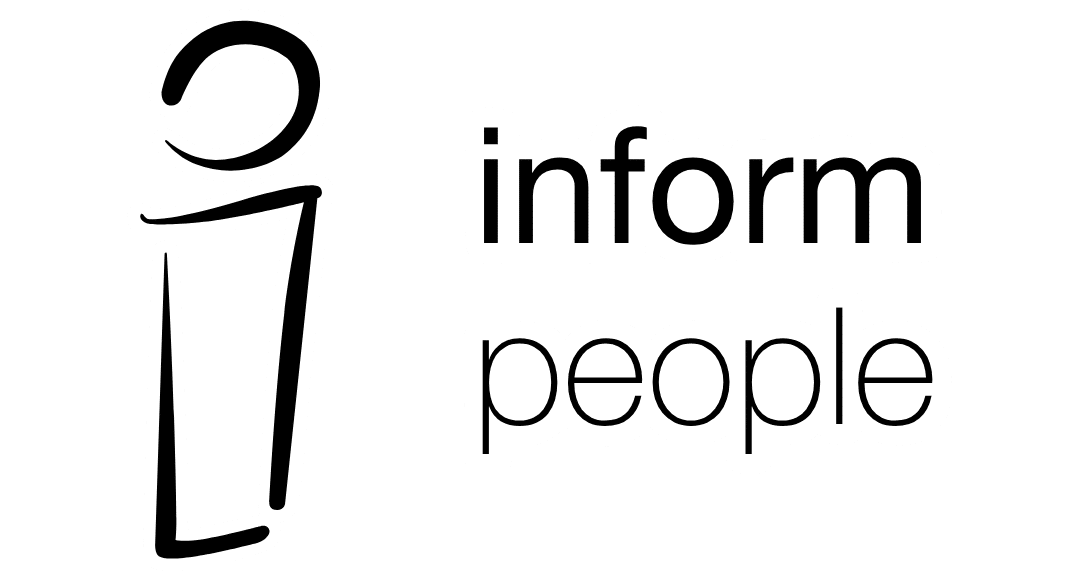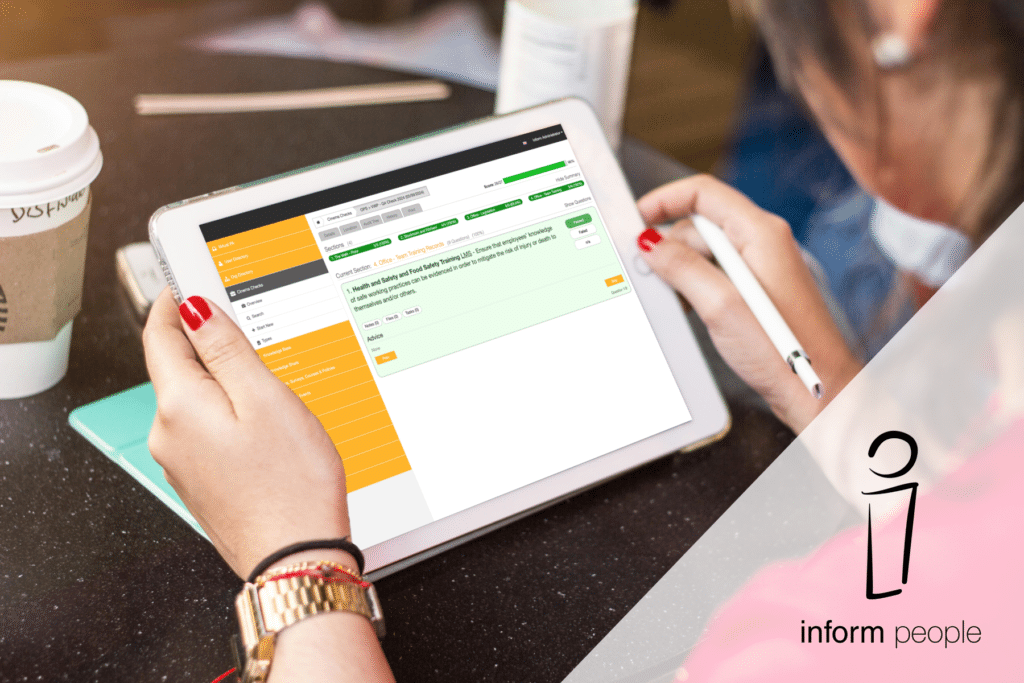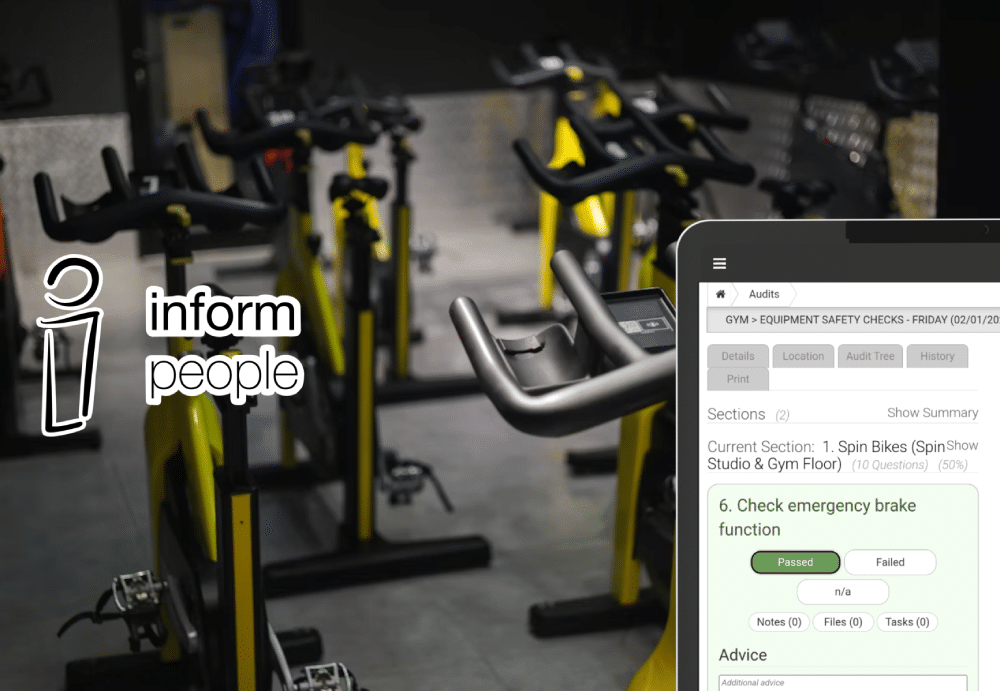Can regular Audits in the workplace can help to monitor change?
Completing regular workplace checklists and auditing, as a standard part of your required location based compliance, means that data is always being collected about the health and safety status of your buildings. Whether this is a complex and in-depth annual Fire Risk Assessment or a simple checkmark on a list when bathrooms are safe/clean. Different types of businesses will handle their auditing in a way that works for them.
Making sure these checks are completed is the first hurdle, and when done on paper (or a locally/not audited system) it’s easy to ‘manipulate’ results. Then again, you might have great compliance, in that your Audits are being completed in every location, on time and with detailed notes – but what next? The follow-on steps become just as crucial; letting you take this information and turn it into knowledge. You need to start looking at what these audits show you; where there are upcoming issues for compliance or training and comparing regional variants of performance.
In the rest of this blog we will reflect on the way that systematically completing regular audits can provide valuable information to monitor and reflect on business process change.
Audits, as we have seen in the retail and hospitality sector, can record the state of a venue at a specific point in time and from this you can see whether all of your locations are at standard and whether changes have a positive or negative impact. This is especially reliable if you have digital reporting that can summarise your metrics such as overall audit scores, failed questions and allow tracking of follow-on tasks.
Below, we are going to concentrate on the lessons we have learnt from the over 5 million audits that have been completed on Inform People and summarise how we think you can get the most out of your audits.
Structure and Guidance
It is important that there is a standard format to your audits so that they can be compared, but also there are a variety of other expected approaches that will make your compliance processes much more efficient and reliable:
- Assign only one person to complete an audit
- Once an audit has been claimed by a person, it is this person’s sole responsibility to complete it
- Ask the right questions
- Be clear in your wording and specific in your instructions
- Don’t repeat yourself
- Reduce time spent on completion by asking each question only once
- Track clear follow on actions
- If there are tasks that need to be completed to fix issues identified, assign these immediately to the people who can make that change
- Provide a way to share supporting documents/evidence
- Uploading images and notes in an online form makes sure that proof is not lost
- Keep final scores as a point in time but still allow an addition of further comments AFTER the Audit has been completed
- Make automatic reporting visible to the key teams who need it.
When you can schedule an audit to be provided to every Manager, every Monday, and notify them as soon as it is available to complete you are able to rely on their completion, rather than hoping that people remember to start them. The benefits of scheduled audits in a system like Inform People is that the platform also has a robust and detailed Organisational Structure so your checklists don’t need to be filled with sections that get marked as N/A – just have a targeted audit for the locations where an outlier feature is under review – such as Escalator Checks only for the venues with an escalator available.
Monitor Completion Levels and Scores
With regularly occurring Health and Safety audits, your people are recording the status of your locations in a comparable format week after week (or to whatever schedule suits your questions). When you implement a change in process, whether this is delivered at targeted locations or nationally, you should see an impact on the scores achieved in these ongoing scheduled audits. Or, if the change is so significant that you want to target feedback specifically, you could implement a new checklist entirely. When Audit scores can be compared from before and after implementation dates, hopefully the positive changes will be reflected in the new scores.
An improvement in audit scores could also reflect well on any additional training that was delivered to your teams in relation to the change in procedure. Higher scores on the same audit as prior to the change can reflect well that the changes put into place are improving best practice and audit outcomes.
Failed Question Analysis
When scores aren’t 100% for any company audits this presents both a risk but also an opportunity to dig into the causes of a lower score and rectify them. To discover the areas that need improvement it is possible to look at any of the checklist questions that are being failed and try to understand why. Identifying gaps in compliance is vital to review and update the expected behaviours and make valuable improvements for the health, safety and wellbeing of all your people.
This can be as simple as refreshing your audit content annually based on trends and releasing additional training to match where there are observed issues at your locations.
Monitor External Factors and Linked Impacts
The effectiveness of change can also be reflected in a reduction in incidents, complaints, and an increase in compliance outside of audits. Procedural changes can introduce new risks or shift existing ones, or you could find that increased compliance has an impact on productivity and you need the data at hand to strike the correct balance. Your auditing process should assist you to identify and mitigate these impacts quickly. Making changes and staying agile will reduce complacency, and if communicated effectively keep all team members, no matter their seniority, in the loop.
This also links back to our recommendation that you review the content of your audits at least annually and adapt what is included based on location attributes. It is also worth providing learning opportunities for your people to help them understand the place of the audits in relation to business risk and the impact on profit protection and insurance claims.
Overall Business Benefits
Whatever the reason for your compliance audits, whether it is to prove compliance to industry regulations, reduce your legal risks in a concrete recorded manner, track health and safety metrics over time: providing clear records for future reference is an important part of the process.
You will also benefit from showing to your employees that you are making a concerted effort to keep them safe, reduce incidents and build trust, which in turn strengthens the company throughout.
Once you take the opportunity to monitor changes and get actionable insights into your whole company, which can be used to refine and improve procedures into the future, your safety strategies can continue to be refined and updated inline with the day-to-day activities in your venues. If you show a dedication to continuous improvement then your employees, clientele, and stakeholders will all be able to see the continuous improvement, and desire to maintain a safer and more efficient work environment.
Auditing is not a ‘one and done’ objective, it is a fluid tool that needs to be reviewed and assessed to provide real business benefits over time. Being aware of what’s happening nationally allows your business to adapt and change based on real on-the-ground observations. What you learn can then be coupled with having regularly updated compliance and performance training materials and conducting Reviews with your teams to gauge the impact on performance and motivation too.
To find out more about Inform People’s comprehensive compliance and performance management suite of tools, get in touch for a demo or a chat.




